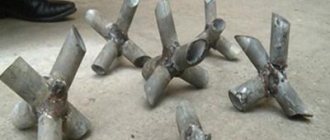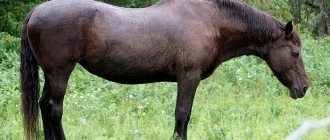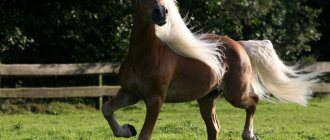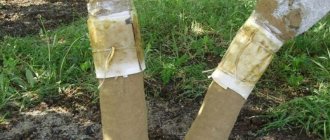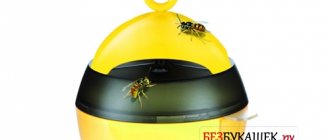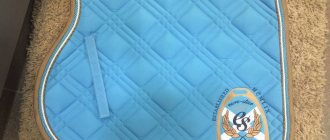04/20/2021 16,035 Horse riding
Author: Olga
It is difficult to imagine village life in the outback of our country without a faithful and reliable assistant - without a horse. Therefore, here you will need both a cart and a sleigh for the horse in winter, when it gets snowy. You can bring cargo on horseback, firewood from the forest, plow your garden, and just go to the market off-road. Previously, almost every village had a cart and sleigh maker. And today you will have to either buy them or make them yourself, which we will talk about in our article.
[Hide]
How to make a cart?
A horse cart is a separate type of horse-drawn transport and has several types. That is why you need to immediately decide, before making it yourself, for what purposes and what type of cart you need. If this is exclusively the work of transporting goods, then it will be enough to have a dray or a cart of the type of platform, that is, without sides with a regular flat bottom. If you need to transport hay and other materials on a cart and use it as a vehicle, then you need to do it with sides.
It is also worth immediately foreseeing how many horses you will harness to the cart. The fact is that a single-horse and a double-horse cart differ in nature and manufacture. Single-horse in Russia has shafts and an arc, and double-horse has a drawbar. If you make the Ukrainian version, then a drawbar cart or cart is used for both one horse and a pair. Note that it is easier to make a drawbar cart with your own hands than an arc cart.
Important points
Before you start making it, you should know a little about the design of the cart and its main parts. So, the main element of any cart is its chassis. And these are two axles (front and rear), wheels and the frame itself on which the body or platform is mounted. There are also struts that act as shock absorbers. In this case, the rear axle is made stationary, that is, without movement, and the front axle is turning, due to this the rotation will be carried out.
The next important elements are the shafts in a curved one-horse cart or the drawbar in a double-horse cart (Ukrainian cart). The shafts and drawbar are attached to the front axle, as they allow the front wheels to turn. It is advisable to make the frame welded metal, since the entire load of the cart will go on it. The cart itself is made of wood.
As for the sizes, previously the standard cart width was about 1.5 meters and the length was 3 meters. The height depends on your desire and the size of the horse, but the standard is from 0.5 to 0.7 meters.
Tools and materials
- Wooden boards;
- welded frame and wheel axles;
- welding machine;
- 4 wheels (car or motorcycle);
- metal pipes or U-shaped profile;
- nails;
- hammer;
- woodworking tools (saw, hacksaw, sandpaper, sander);
- other tools as needed;
- blueprints.
The request returned an empty result.
Step-by-step instruction
- First of all, we need to make the chassis of the cart. This, as we have already said, is a welded solid frame and wheel axles. If you have never dealt with welding, you will have to turn to the experts. The frame and axles can be made of solid metal from a profile or from thick-walled pipes.
- We make a rear stationary axle and a front rotating one on a pin on two fixed washers.
- Before completing the front axle, we decide on the type of cart. If it is a drawbar, then we make a special holder for the drawbar. The shafts are made welded to the front axle on a special holder. That is, the shafts should not be removable, but movable to the sides and even up and down - due to the holder. They can also be mounted on brackets and reinforced with special cords - wire rod with a diameter of 10-12 mm, which is attached to the shaft and the front axle.
- We complete the chassis by installing wheels and, if necessary, brakes.
- Now you can move on to the base of the cart - the body. If we are making a platform, then everything is simple - we cut the boards to the required length and width and knock them together into one platform, attaching them to the frame. If there are sides, then first we make 4 longitudinal poles, onto which we then nail vertically inclined slats. We immediately attach the side sides to the frame, and make the front and rear sides removable for greater ease of use of the cart at work.
- As for shafts, they can be made either metal from pipes or wood. The drawbar, as a rule, is made only of wood.
- For the convenience of sitting in a cart, you can make a bench in the back or even attach soft seats.
- If you plan to go on the highway, you need to attach reflectors to the rear of the finished homemade cart.
Arc
- The arc is a special part of the shaft cart, which will have to be worked on if there is no ready-made one. It is made from elm or willow wood, as the material must be strong and flexible. In the old days, oak, birch and hazel were also used.
- A homemade arc harvesting should be cut in early spring, when the sap is just beginning to move in the tree. The blank itself for the arc is taken with a thickness of 8 to 12 cm and a length of 1.5 to 1.8 m.
- It is better to bend the arc in a special machine (arc), placing the edges in the recesses. Before work, the wood is first soaked in cold water, and half an hour before work is steamed with boiling water for greater flexibility. If the wood bends badly, it is steamed several times.
The request returned an empty result.
After complete bending, the edges of the arc are tied with a tight rope and the tree is allowed to dry and take the desired shape - about 45 days. How to do this at home, watch Oleg Moskalenko’s video.
What types of carts are there?
Don’t think that there are only one or two types of vehicles; everything is much more complicated.
Carriages
This is a cart with a closed body and mandatory springs. This type of crew is the most convenient, comfortable and expensive. The horses are driven by a specially trained person - the coachman, who sits on a box in front of the carriage. It cannot be said that the trip here is comfortable: it is the driver who experiences all the tricky weather conditions. If the carriage is of a simpler type, then it may not have goats, and then the coachman sits on the handle or edge of the cart.
recommended articles:
- Why do horses need horseshoes and how to shoe them correctly?
- Aviary keeping of rabbits and its features
Inside the carriage there are several soft seats and side windows. Through the window located in front, you can give special instructions to the coachman. At the back there are heels, on which stand footmen accompanying a noble person to the ceremonial departure.
Boarding the carriage was carried out using a folding step. It was the footmen who folded back this ladder, helped open the doors and lit the lanterns on the carriage if the trip was carried out after dark.
The number of horses harnessed depended on the lightness of the design. Threes and fours were the most popular. The lightest carriage could be carried by a horse couple. Such a vehicle was a luxury and an indicator of prestige in society. In the absence of a personal carriage, it was necessary to hire a pit cart.
Strollers and tarantasses
A stroller is a lightweight, simple carriage with a folding top. Its advantage is convenience and mobility. A harness might require a pair or three horses. Particularly wealthy people harnessed six-wheelers. It all depended on the position in society. Phaeton and landau are just types of strollers.
The second type of vehicle was more suitable for road travel. Here, the main distinguishing features were durable manufacturing materials, and not their beauty. And what is the point of carved decoration if the cart breaks down in the middle of the journey? Instead of springs, long springs up to 6 m were used, to which the body was attached. Thanks to them, the shaking on the bumpy road was softened and was much easier for travelers to bear.
What is a britzka
This type of cart is a lighter version of the tarantass. There is a folding top. On britzkas, similar to tarantats, they made long trips. There are several types of such carriages: with springs, without them, and postal type. Today, a one-horse harness is often called a chaise.
Britzka
Gig
This concept includes a horse-drawn carriage equipped with two wheels. The word itself takes its name from the concept of two-wheeled, the first part of which means “two”, and the second - “wheel”. These carriages can be either with springs or without. The gig has a track width of approximately 100 cm; there are only two seats in such a carriage. One of the passengers directly controls the horse. The body part is made of boards or plywood, and a shield must be installed in front to prevent dirt from splashing passengers. Directly under the seat you can place a small amount of things or necessary tools.
Making a sleigh with your own hands
Anyone can buy a sled, but it will not be affordable for everyone, since their cost is quite considerable. Well, all that remains is to do it yourself. Moreover, sleighs were people's favorite transport. Watch the video by pashinkirill about this.
Tools and materials
Before making a sleigh for a horse, you need to decide what material the most important part will be made of - the runners. They can be metal or wood. If you want to make it from wood, you will need special skills and knowledge in preparing the wood and bending it. It’s easier with metal; here you only need to forge the runners in the workshop.
- Wooden boards;
- plywood;
- sheets of metal;
- corners or metal profile;
- metal pipes;
- varnish, paint;
- woodworking tools;
- other tools as needed;
- blueprints.
Step-by-step instruction
- The very first and most difficult thing is the runners. We will make them metal - it’s easier that way. Stainless or ordinary carbon steel will do. It is better to make the runners forged flat from a solid sheet of metal, but there is also the practice of using pipes. But to bend them you will need helpers.
- When the runners are ready, we move on to the base - the crossbars and racks, which are located on both sides. They can be made from pipes or profiles. All parts will need to be welded.
- An important part of the sled is the brakes. When the runners are ready, we make them in the simplest way - block runners in the form of rubber with a lever. This will be both the running brake and the parking brake.
- We weld metal plates to the front part, onto which the shafts will then be attached.
- When the chassis is ready, we make the body of the sleigh out of wood - this is how your imagination will work. Of course, drawings are made first. Afterwards, the bottom and inside can be covered with plywood and even a soft material can be attached on top for convenience, for example, leatherette or felt.
- Lastly, we attach the wooden shafts and that’s it – the sleigh for the horse with your own hands is ready!
Purpose
Depending on the purpose, horse carts are divided into:
- passenger;
- cargo;
- combat;
- specialized.
Among the passenger carriages, in turn, there are:
- A horse carriage is a covered carriage.
- Stagecoach is a multi-seat carriage, passenger or mail.
- A wagon is a cart that serves as a dwelling for nomads.
- A stroller is a small-sized carriage that has an open top.
- A britzka is a semi-open carriage.
Among the cargo carts for horses are:
- Arba is a two-wheeled cart.
- A cart is a four-wheeled cart. If the cart is covered, it is called a van.
- A wagon is a large, long cart.
Types of battle wagons:
- chariot;
- cart.
Specialized carts are divided into:
- field kitchen;
- mobile church;
- mobile medical station.
It should be noted that no matter what type of cart the master plans to make, the base of the cart will always be approximately the same. First you need to make a flat flooring on the base of the frame, and only then think about the appearance of the cart. Whether it will be a cart, carriage or carriage - the inventor will decide later, turning his fantasies and imagination into reality.
Video “How a sled is made”
An interesting video about how sleighs and horse harnesses were made to secure the sleigh in the old days.
Sorry, there are no surveys available at this time.
Was this article helpful?
Thank you for your opinion!
The article was useful. Please share the information with your friends.
Yes (50.00%)
No (50.00%)
X
Please write what is wrong and leave recommendations on the article
Cancel reply
Rate the benefit of the article: Rate the author ( 6 votes, average: 3.17 out of 5)
Discuss the article:
Shaft-arc harness
Shaft-arc type harness is considered a traditional method. By the way, it is an original Russian version. To understand how to harness a horse, you must first know what parts the structure consists of. It is imperative to check the presence of all elements. There must definitely be a horse clamp with tugs. A cap, a bow, a saddle and other parts are also required. Clamps are selected for all horses, based on the individual parameters of each. This design should fit neatly to the horse's shoulders. If the part is too large, then it is narrowed inside by sewing felt. If the structure is small for a horse, then it cannot be used with a cart. You also don’t need to use a saddle strap without a saddle, since the thin strap rubs the skin a lot. It must be pulled tight and passed through the top of the saddle. The harness must be completely assembled. This part evenly distributes pressure on the horses body.
Now there are several types of such vehicles
Each detail has its place and sequence when put on. To harness a horse, you must perform the following steps:
- You have to start by putting on the bridle. In cold weather, you first need to warm up the bit. Otherwise, the cooled iron can harm the tissues.
- Now the harness goes as follows: take the harness in your left hand, place the saddle in your right hand, which is supposed to be placed on the back of the horses. First, place it on the area that is located closer to the withers, and then straighten the hair and bring the part further.
- The front of the saddle should be located higher than the withers, and the back, on the contrary, should lie lower on the back - approximately between the 9th and 15th ribs.
- I straighten the harness of the saddles and place them about 10 cm from the horse’s elbow. Tighten the girth so that 2 fingers can be inserted between the body and the girth.
- Then you need to put a collar on the horse. It should be turned with the bottom side up and passed through the horse's head. When the part is level with the narrow part of the neck, you need to turn the clamp over and install it correctly. Then straighten the fur and throw the harness over the animal’s body.
- Now you need to lead the horse into the shafts. The ends should be located approximately near the tugs.
- On the right side, you need to fasten the interlace to the loops. Then do the same on the other side.
- Hold the tug in your left hand, and carefully take the horse's bow. It should be carefully brought under the left shaft and circled counterclockwise. Then tighten the ends into loops. Repeat the same steps only on the other side to install the right shaft.
- Now you need to go to the horse’s shoulder blade, take the soup and tighten the 2 ends of the clamp. Be sure to check if there is enough tug. If the ends cannot be closed, then it is necessary to lengthen the clamp itself. If the ends are closed, then the arc is poorly positioned, then it is recommended to shorten the tugs.
- Reins must be attached to the bridle, which can be threaded through the middle part of the arch if the harnessed horse is obedient. If she doesn’t listen well, then it’s best to do it from the outside.
- It is necessary to ensure that the tugs are located behind the arc, not in front. You should definitely check the horse cart for stability and mobility.



